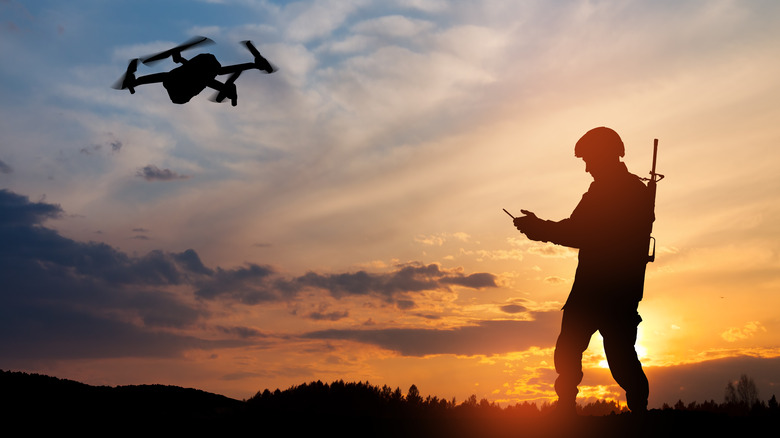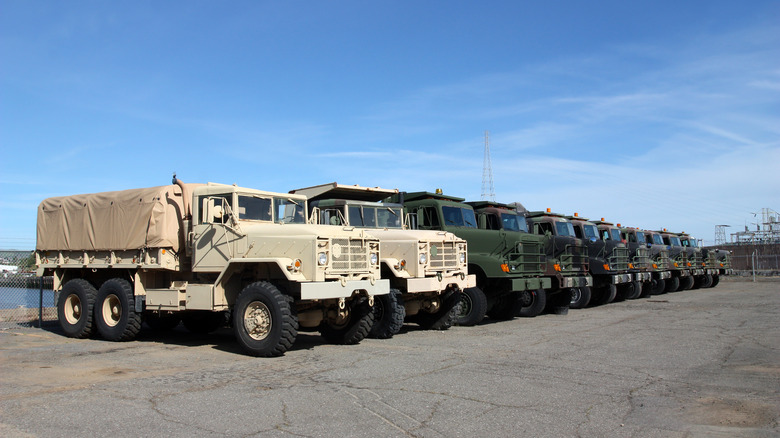The U.S. military has recently reported an interest in developing a new means of transporting power to remote and otherwise isolated forward operating bases and other positions in the field (via Popular Mechanics). This might sound like a work of science fiction, but the truth is that some success has already been achieved in the field of energy transference through the use of laser technology (via European Space Agency). Of course, there are some challenges to overcome if this approach is to work. Popular Mechanics notes that energy transported through the use of a laser is susceptible to the same mechanics of loss that other power sources experience. As a result, the technology isn’t quite up to snuff yet, but there is hope for the future when it comes to moving energy resources in this manner.
Essentially, this change would see unmanned drones positioned at certain generalized locations from one post to the next. Electric power would be transformed into a laser beam and shot at the first drone in the chain. Then lasers on each subsequent UAV would send the energy along the cycle, eventually landing at a receiver located in a forward position and converting back into electrical energy. When thinking about the mechanics of this solution, the idea actually resembles a melding of the way that UAVs are currently used for refueling, and the means by which data is beamed across satellite arrays or a warning sign might have been relayed across mountaintops with large fires in ancient times.
In this regard, the idea isn’t so much a new one as it is a rephrasing of older technological concepts for the new age.
Replacing diesel fuel would be environmentally beneficial, for one thing
One thing that this technology would achieve is a diminishing reliance on diesel fuel to power generators across military theaters. Soldiers in all parts of the world rely on electric power to eat, communicate, secure their facilities, and of course, wage war effectively when the situation demands it.
One thing that is often forgotten about when considering the technology and logistics of warfare is the sheer volume of transportation equipment and electrical power that is required to maintain an efficient fighting force. Modern War Institute reports that diesel fuel is the go-to means of powering the standard forward operating base today (as part of a Vietnam-era “single fuel concept” designed to streamline the war effort), and a typical base requires as many as 22 gallons of diesel fuel per day to support each soldier stationed at the location (via Popular Mechanics). Diesel fuel is, by all accounts much worse for the environment than traditional unleaded fuel (via Transport & Environment). But when it comes to generating power, diesel is a much more effective option. Similarly, not only are diesel generators a major source of pollutants, but they are also loud and therefore draw an enormous amount of attention. The environmental impact alone on the soldiers who live at these bases and the communities that they exist in close proximity to would be drastically improved with the advent of new laser-based power generation capabilities.
This isn’t the first use of lasers in battlefield applications, and it certainly won’t be the last.
This change could provide more reliable and secure power
Not only does this mean that the military must procure enormous reserves of diesel fuel, but it also must commit a huge effort to move this fuel across enemy lines in order to deliver it to the soldiers that need it the most.
Military transport vehicles have long been a target for enemy troops. From the days of antiquity through to the modern state of conflict, disrupting your opposition’s logistical framework and supply lines is a surefire means of derailing their war effort (via U.S. Army). When fighting against a substantially better-armed fleet, this is one of the most effective means of leveling the battlefield in your favor. As a result, careers in military transportation are perilous, even as they remain an immensely necessary part of any war effort.
Upending a supply line not only tips the balance of a conflict but also puts the soldiers who rely on these resources in mortal jeopardy. If power resources, ammunition, and defensive supplies aren’t able to reach their destination, the soldiers stationed at these forward bases become increasingly vulnerable to assault. But a transition to laser-delivered power resources means that a more reliable energy format can be used to maintain lights, security cordons, and much more without interruption. Similarly, without having to transport heavy and volatile diesel fuel, transport units can focus on other resources that make fighting a battle more efficient and less dangerous.
Source: http://www.slashgear.com/1119917/the-u-s-military-wants-to-power-bases-with-a-flying-chain-of-laser-drones/
 drone-reviewm.com
drone-reviewm.com



